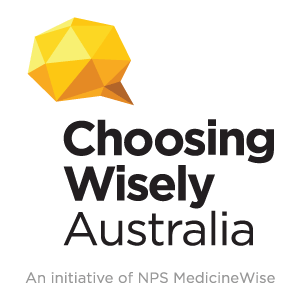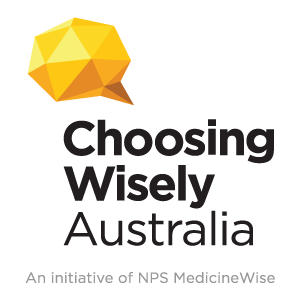Key points
- Every day in Australia, on average, 3 people die and nearly 150 are hospitalised because of harm from opioids.
- Opioids should only be considered for patients with chronic non-cancer pain once non-pharmacological therapies and non-opioid medicines have been optimised.
- If opioids are appropriate, they should only be considered as part of a multimodal treatment approach, and each GP and patient must have a clear plan that includes criteria for ceasing the medicine.
- Opioid analgesia attenuates with time, while the harm persists or increases with time and increasing doses. For some patients, the primary benefit of opioids becomes the avoidance of withdrawal.
- Recent evidence suggests that tapering opioids improves pain, function and quality of life. However, this is often challenging and can take time.
Opioid tapering algorithm
This algorithm assists health professionals with the steps involved in preparing a successful tapering plan with their patients who have chronic non-cancer pain.
Medicinewise News: 5 steps to tapering opioids for patients with chronic non-cancer pain

The decision to taper opioids is daunting for both patients and prescribers. Careful planning, close, patient-centred engagement and realistic goals can help lay the groundwork for success.
Medicinewise News: If not opioids, then what?

Opioid medicines for chronic pain continue to pose a challenge in primary health care. Read about the latest evidence, supported by conversations with GP Dr Andrew Broad and clinical psychologist Associate Professor Toby Newton-John.
Practice Review – Opioids: Prescribing in chronic non-cancer pain

Australian GPs recently received a Practice Review on opioid prescribing, designed to help them reflect on their prescribing of opioids for patients with chronic non-cancer pain. It was developed in collaboration with GPs and has been sent to approximately 30,000 prescribers nationally, including all GPs.
Find out more about the Practice Review and how it helps GPs:
- reflect on their data in relation to their prescribing of opioids for patients with chronic non-cancer pain
- find more information to help them interpret and understand their data
- access a sample report.
- reflect on their data in relation to their prescribing of opioids for patients with chronic non-cancer pain
- find more information to help them interpret and understand their data
- access a sample report.
Opioids out of balance

Opioids can be an effective component of the management of acute and cancer-related pain. However, evidence shows that for most patients with chronic non-cancer pain opioids do not provide clinically important improvement in pain or function compared with placebo.
In contrast, they carry significant risk of harm; around 80% of people taking opioids for 3 months or more experience harms. These range from mild through to severe and fatal.
Find out more about the background to the NPS MedicineWise Opioids program.
Opioids: Communication videos
These videos discuss conversations between health professionals and patients and outline 'motivational interviewing', the recommended evidence-based communication approach for these conversations.
Opioids podcasts
The following are opioids special podcast episodes from the regular NPS MedicineWise podcast series that helps health professionals stay up to date with the latest evidence for medicines, tests and treatments.
Opioids videos
Opioids information video
This animated video from NPS MedicineWise and the Faculty of Pain Medicine of the Australian and New Zealand College of Anaesthetists (ANZCA) provides information to people who may be considering taking opioids for chronic (ongoing) non-cancer pain.
Video series: Asking painful questions
Hear more about the experiences of people living with pain and of healthcare professionals involved in pain management in the video series, Asking painful questions.
CPD options
For GPs
- Clinical case study – Chronic pain: Supporting patients to taper opioids
- Webinar – Opioid prescribing: strategies for GPs to optimise chronic non-cancer pain management and minimise harms
For pharmacists
- Clinical case study – Chronic pain: Supporting patients to taper opioids
- Webinar – Supporting patients living with chronic non-cancer pain – the role of the pharmacist
For dentists
RADAR articles

Naloxone nasal spray (Nyxoid) for opioid overdose
PBS listing of naloxone nasal spray to increase naloxone use as emergency rescue treatment in the community

Opioids: New and amended PBS listings
Changes have been made to support the appropriate prescribing and use of opioids, and reduce harms.
Podcast series: Safer patient care in the era of SafeScript

Listen to our multidisciplinary panel of experts and consumers as they discuss the clinical risks associated with long-term opioid and benzodiazepine use, the importance of ensuring continuity of care for all patients, and how SafeScript, Victoria’s real-time prescription monitoring system, is helping clinicians provide safer patient care.
Choosing Wisely Australia

Choosing Wisely Australia helps healthcare providers and consumers have important conversations about improving the quality of healthcare by reducing unnecessary and sometimes harmful tests, treatments, and procedures.
Led by Australia’s colleges, societies and associations and facilitated by NPS MedicineWise, Choosing Wisely Australia challenges the way we think about healthcare, questioning the notion 'more is always better'.
5 questions to ask your doctor or other healthcare provider is a resource that can help patients ensure they end up with the right amount of care.
See the Choosing Wisely recommendations for opioids
Recommendations from the Society of Hospital Pharmacists of Australia
Recommendations from Faculty of Pain Medicine, ANZCA
- Do not continue opioid prescription for chronic non-cancer pain (CNCP) without ongoing demonstration of functional benefit, periodic attempts at dose reduction and screening for long-term harms.
- Avoid prescribing opioids (particularly long-acting opioids) as first-line or monotherapy for chronic non-cancer pain (CNCP).
Australian Prescriber articles and podcasts

Prescribing wellness: comprehensive pain management outside specialist services
Simon Holliday, Chris Hayes, Lester Jones, Jill Gordon, Newman Harris, Michael Nicholas Aust Prescr 2018;41:86-91
Maintaining the focus on biomedical treatments, including medicines such as opioids, has limited success for chronic non-cancer pain. The recommended management in primary care includes addressing psychosocial maladaptations and physical deconditioning, active self-management and healthy lifestyle choices, frequently involving multiple providers.
Real-time prescription monitoring: lessons from Tasmania
Peter Boyles Aust Prescr 2019;42:48-9
Real-time prescription monitoring programs are effective in improving clinical decision-making. They also reduce doctor shopping and the diversion of controlled substances. These programs therefore have the potential to reduce harm from prescription drugs, including deaths from opioid poisoning.
Changes for codeine
Darren M Roberts, Suzanne Nielsen Aust Prescr 2018;41:2-3
From 1 February 2018 codeine is being rescheduled to a prescription-only medicine. The reduced availability of codeine can be anticipated to reduce harms for many who are codeine dependent.
Neuropathic pain: current definition and review of drug treatment
Bridin P Murnion Aust Prescr 2018;41:60–3
Neuropathic pain management options include tricyclic antidepressants or serotonin and noradrenaline reuptake inhibitors in the first instance, followed by pregabalin or gabapentin; tramadol or topical lidocaine (lignocaine) are second line; and stronger opioids third line. It is important to remember that opioids and gabapentinoids have abuse potential.
Acknowledgements
All activities and resources developed in this program were extensively tested and reviewed by specialists, experts, GPs and pharmacists. We would like to thank everyone who contributed to the development of the program, with a special mention to the GPs and pharmacists who participated in focus groups and pilots.
GPs
Dr Hany Abdalla, Dr John Addis, Dr David Brand, Dr Andrew Broad, Dr John Paul Brougham, Dr Geoffrey Campbell, Dr Anne Cripps, Dr Paul Hanson, Dr Chris Hayes, Dr Steve Kelly, Dr Duncan MacKinnon, Dr Symon McCallum, Dr Robert Menz, Dr Gary Nicholls, Dr Cameron Profitt, Dr Rashmi Sharma, Dr Samuel Stevens, Dr Ilona Szabo, Dr Marion Tait.
Pharmacists
Demi Broxham, Leah Chen, Phillip Davis, Caroline Ennis, Romana Kristelly, Viki Lui, Sharon Doolan, Fahad Shaikh, Zachary Sum, George Tawfik, Tania Watson, Kirsty West.
For your patients
Opioids information video
This animated video from NPS MedicineWise and the Faculty of Pain Medicine of the Australian and New Zealand College of Anaesthetists (ANZCA) provides information to people who may be considering taking opioids for chronic (ongoing) non-cancer pain.
Easy-to-read consumer information
Patient guides to managing non-cancer pain and opioid medicines

It's important only to use opioids for the shortest possible time at the lowest possible dose. These patient guides offer:
- 5 questions to ask when prescribed opioids for non-cancer pain in hospital
- tips for taking opioids at home
- a personal pain management plan.
The use of opioids in palliative care to manage symptoms of a life-limiting illness is not within scope of these resources.
- 5 questions to ask when prescribed opioids for non-cancer pain in hospital
- tips for taking opioids at home
- a personal pain management plan.
5 questions to ask about using opioids for back pain or osteoarthritis
Date published : 15 October 2020
GP-mediated tapering action plan
Extra space to record dose and monitoring goals while lowering opioid medicine use.
Painaustralia resources
The page Role of Medication provides information about:
- medications for chronic non-cancer pain and changes to codeine access
- videos explaining pain and what to do about it
- material on the limited role of opioids, and
- resources from factsheets to self-management tools.
Pain Management Network resource
Pain and role of medications provides information and videos about medicines for chronic non-cancer pain.
Clinical resources and tools
Opioid tapering algorithm
This algorithm assists health professionals with the steps involved in preparing a successful tapering plan with their patients who have chronic non-cancer pain.
Starting a conversation about opioid tapering with patients
This provides practice tips for GPs and pharmacists on communicating with patients about lowering or stopping opioids. These tips include guidance on approaches and specific wording to use.
RACGP policy templates
Good clinical governance is supported by comprehensive practice policies aimed at a unified approach to drugs of dependence, which support individual GPs to prescribe them safely and appropriately. Here are 12 policy templates from the RACGP Prescribing drugs of dependence in general practice, Part C1: Opioids.
RACGP Simple checklist for a general practice to review its quality management of drugs of dependence
Date published : 2 October 2019
Guidelines and key papers
Guidelines
|
Authors |
Title |
Description |
|
RACGP 2017 |
Prescribing drugs of dependence in general practice, Part C1: Opioids |
This guide aims to help general practitioners (GPs) prescribe opioids appropriately in the general practice context. It is designed to discourage inappropriate use and reduce harms by providing GPs with guidance and practical advice regarding opioid therapy. It is complemented by Part C2: The role of opioids in pain management and aligns with Prescribing drugs of dependence in general practice, Part A: Clinical governance framework. |
|
Prescribing drugs of dependence in general practice, Part C2: The role of opioids in pain management |
This guide is designed to assist with the appropriate and accountable prescribing of analgesic medications in the general practice context. Used in combination with Prescribing drugs of dependence in general practice, Part C1: Opioids, it is designed to discourage inappropriate use and reduce harms of opioids. It provides GPs with evidence-based guidance and practical advice on pain and pain management. In particular, this guide provides recommendations for GPs who are prescribing opioids for acute and chronic pain outside of active cancer treatment, palliative care, and end-of-life care. |
|
|
Faculty of Pain Medicine. Australian and New Zealand College of Anaesthetists (ANZCA) 2015 |
Recommendations regarding the use of opioid analgesics in patients with chronic non-cancer pain. |
This concise document outlines the position of the FPM on opioid use in chronic non-cancer pain. It reviews the evidence (up to time of publication) and presents principles and practical advice for opioid prescribing. |
|
NSW Agency for Clinical Innovation (ACI) 2019 |
Quick steps to manage chronic pain in primary care. Pain management network |
The most recent Australian opioid guideline. It is a brief guide that provides easily understood information on initiating, continuing and reducing opioids. |
|
Busse et al. 2017 |
These are comprehensive guidelines on the use of opioids in chronic non-cancer pain, published by the CMAJ. The CMAJ has also developed the MAGICapp website that contains guideline recommendations, best practice statements and expert guidance. |
Key papers
|
Authors |
Title |
Description |
|
Juurlink. 2017 |
This paper articulately reframes the use of opioid therapy in chronic non-cancer pain and argues for a more cautious approach to the use of opioids. |
|
|
Dowell and Haegerich. 2017 |
Provides a short commentary on tapering including risks/benefits and practical strategies for patients having challenges with tapering. |
5 Questions to ask your doctor or other healthcare provider

Choosing Wisely Australia helps healthcare providers and consumers have important conversations about improving the quality of healthcare by reducing unnecessary and sometimes harmful tests, treatments, and procedures.
Led by Australia’s colleges, societies and associations and facilitated by NPS MedicineWise, Choosing Wisely Australia challenges the way we think about healthcare, questioning the notion 'more is always better'.
5 questions to ask your doctor or other healthcare provider is a resource that can help patients ensure they end up with the right amount of care.
Weighing up benefits and harms of opioid treatment
|
Authors |
Reference |
Results and recommendations |
|
Busse et al, 2018 |
Opioids for chronic noncancer pain: a systematic review and meta-analysis |
A meta-analysis of 96 RCTs (n=26,169) of patients with chronic non-cancer pain, which found that for most patients, opioids do not provide clinically important improvement in pain or function compared with placebo. Evidence from RCTs shows that use of opioids compared with placebo was associated with statistically significant but small improvements in pain (−0.69 cm on a 10 cm scale, less than the minimally important difference of 1 cm) and physical functioning (2.04 of 100 points, less than the minimally important difference of 5 points). Opioids were associated with less pain relief during longer trials which may be a result of opioid tolerance or opioid-induced hyperalgesia. The authors suggest a reduced association with benefit over time might lead to prescription of higher opioid doses and consequent harms. In the 6 RCTs that compared different doses of opioids, meta-regression of moderate-quality evidence showed no dose response for pain relief (p=0.39), functional recovery (p=0.22), or gastrointestinal adverse events (p=0.12). |
|
Krebs et al, 2018 |
This long-term randomised clinical trial concluded that treatment with opioids alone was not superior to treatment with various combinations of non-opioid medications for improving pain-related function over 12 months. Of the 234 randomised patients who completed the trial, there was no statistically significant difference between opioid and non-opioid groups on pain-related function over 12 months (overall p=0.58). Pain intensity was significantly better in the non-opioid group over 12 months (overall p=0.03). Adverse medication-related symptoms were significantly more common in the opioid group over 12 months (overall p=0.03). Results do not support initiation of opioid therapy for moderate to severe chronic back pain or hip or knee osteoarthritis pain. |
|
|
Chou et al, 2015 |
This systematic review evaluates evidence on the effectiveness and harms of long term (> 3 months) opioid therapy for chronic pain in adults. Evidence is limited, but accumulating data suggests that opioid treatment for chronic pain is associated with increased risk for serious harms. These include overdose, opioid misuse, fractures, myocardial infarction, and markers of sexual dysfunction; for some harms, the risk seems to be dose-dependent. |
|
|
Mazereeuw et al, 2018 |
Mazereeuw et al 2018. Depression in chronic pain: might opioids be responsible? |
Emerging evidence suggests an association between opioids and depression. The paper describes a dose-dependent association between opioids and depression, particularly with prolonged use. There is some data to suggest that initiation of opioid therapy is associated with failure of first-line antidepressant interventions. Additionally, opioid dose reduction may improve depressive symptoms. The authors suggest clinicians consider a cautious, gradual taper under close medical supervision for patients with depression on long-term opioid therapy. |
Tapering opioids
|
Author |
Reference |
Results and recommendations |
|
Frank et al, 2017 |
This systematic review synthesises study findings on the effectiveness of strategies to reduce or discontinue long-term opioid therapy, and patient outcomes after dose reduction. Very low-quality evidence suggests that several types of interventions – including interdisciplinary pain programs, behavioural interventions and buprenorphine-assisted dose reduction – may be effective to reduce or discontinue long-term opioid therapy. Pain, function, and quality of life may improve with opioid dose reduction. |
|
|
Fishbain and Pulikal, 2018 |
The results of this systematic review confirm the hypothesis that opioid tapering for patients with chronic pain improves pain or maintains the same pain level by taper completion but does not increase pain. As patients are fearful of increased pain as a result of discontinuing opioids, these findings may help clinicians provide reassurance about opioid tapering. |
|
|
Matthias et al, 2017 |
Communicating about tapering can be difficult, particularly with patients receiving long-term opioids who perceive benefits and are using their medications as prescribed. This study identifies best practices and opportunities for improvement in communication. The study concludes that although opioid tapering can be challenging, helping patients to understand individualised reasons for tapering, encouraging patients to have input into the process, and assuring patients they will not be abandoned all appear to facilitate better communication about tapering. |
Non-pharmacological pain management strategies
|
Author |
Reference |
Results and recommendations |
|
Khoo et al, 2019 |
A systematic review and network meta-analysis that compared mindfulness-based stress reduction (MBSR) to cognitive behavioural therapy (CBT) against control conditions for patients with chronic pain (n=1981). Clinically important advantages were found in physical functioning, pain intensity and depression for both therapies and there was no significant difference between the two. The authors concluded that while CBT is the preferred psychological intervention for patients with chronic pain, not all patients with chronic pain experience a clinically significant treatment response. MBSR presents an additional solution for improving pain severity and reducing pain interference and psychological distress. |
|
|
Williams et al, 2012 |
Psychological therapies for the management of chronic pain (excluding headache) in adults (Review) |
This Cochrane review analysed data from 35 studies (n=4788) and compared two main classes of treatment; cognitive behaviour therapy (CBT) and behaviour therapy with control conditions. The authors found that CBT is a useful approach to the management of chronic pain. CBT has weak effects in improving pain immediately post-treatment, when compared with treatment as usual/waiting list. CBT has small effects on disability associated with chronic pain, with some maintenance at 6 months. CBT is effective in altering mood and catastrophising outcomes, with some evidence that this is maintained at 6 months. Behaviour therapy has no effects on mood but showed an effect on catastrophising immediately post-treatment. |
|
Veehof, et al, 2016 |
A meta-analysis of 25 RCTs (n=1285) that concluded that acceptance- and mindfulness-based interventions for chronic pain have small effects on pain intensity, depression, disability and quality of life, and moderate effects for anxiety and pain-interference. Acceptance and commitment therapy (ACT) showed significantly higher effects on depression and anxiety in individuals with chronic pain than mindfulness-based stress reduction (MBSR) and mindfulness-based cognitive therapy (MBCT). |

